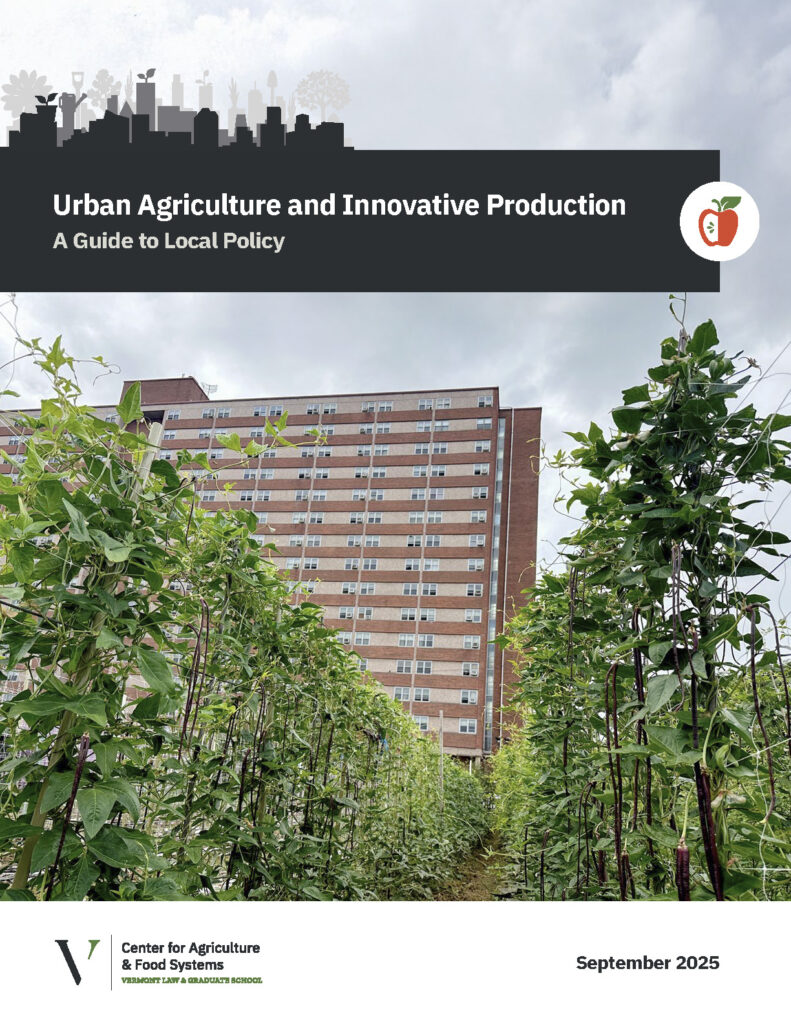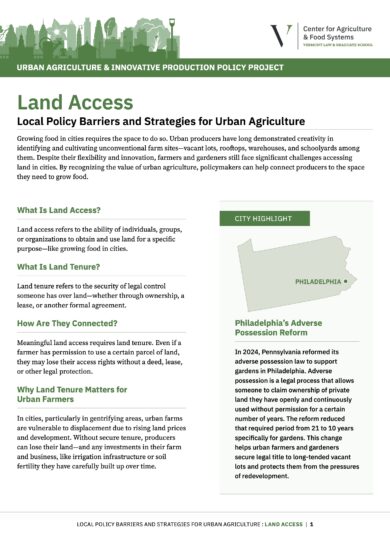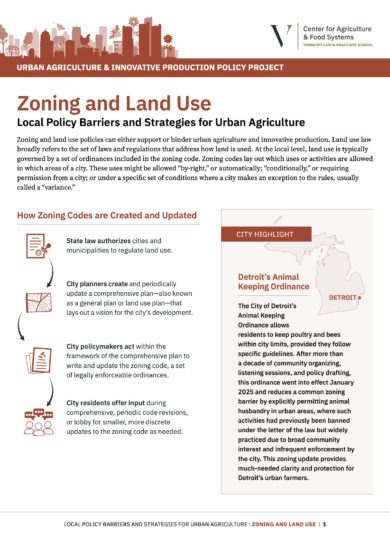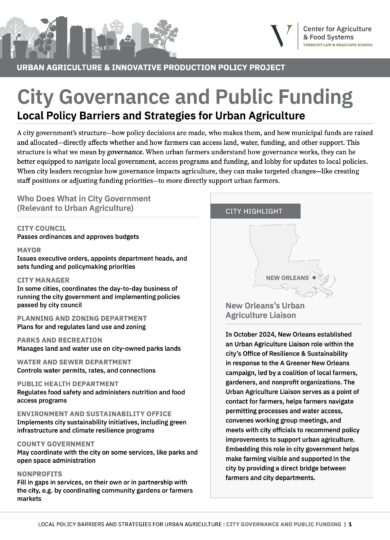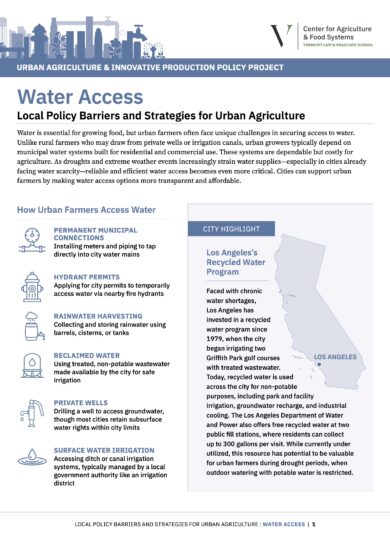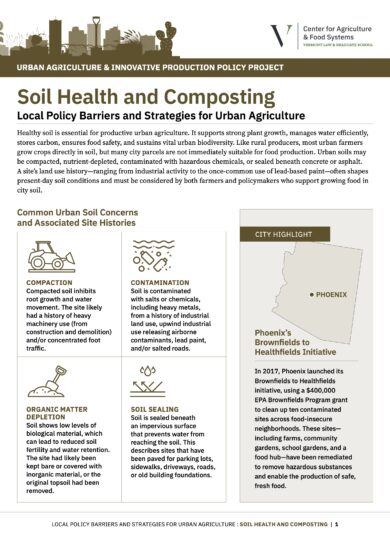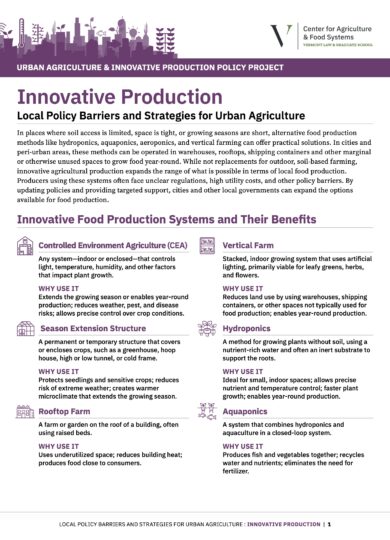New Guide Covers the Local Policy Landscape of Urban Agriculture and Innovative Production
The Center for Agriculture and Food Systems (CAFS) at Vermont Law and Graduate School has released “Urban Agriculture and Innovative Production: A Guide to Local Policy,” a new resource to help city policymakers, farmers and food producers, and community organizations navigate the local policies that shape food production in U.S. cities.
Urban Agriculture and Innovative Production: A Guide to Local Policy
Developed with support from the Office of Urban Agriculture and Innovative Production at the U.S. Department of Agriculture, this guide examines how 17 cities designated by USDA as “urban agriculture hubs” address challenges related to land access, zoning, city governance, water access, soil health, and innovative production. Drawing on insights from farmers, city leaders, community organizers, and other stakeholders, this resource provides practical strategies for both producers and policymakers to develop local policies that boost urban food production.
“This project provides a broad picture of the urban agriculture policy landscape in the U.S., including common barriers that farmers encounter and creative policy strategies,” said Lihlani Nelson, CAFS’s Deputy Director and Senior Researcher. “Whether you’re a farmer or policymaker, the lessons we’ve drawn from these cities can help you think about what’s possible in your community.”
“We grounded this guide in real-world examples of ways that cities are supporting urban agriculture through local policy choices: Philadelphia’s ambitious urban agriculture planning initiative, Chicago’s farmland access programs, and several examples of urban agriculture-focused zoning updates and new city offices devoted to urban agriculture,” said Liz Turner, Visiting Assistant Professor at Vermont Law and Graduate School. “While each city’s historical and contemporary context is unique, we aimed to highlight proven policy strategies that may help foster urban food production in cities across the country.”
The guide is accompanied by a series of fact sheets called “Local Policy Barriers and Strategies for Urban Agriculture” that distill the research into concise, practical references for quick use by policymakers, farmers and gardeners, and urban agriculture supporters. A fact sheet accompanies each section of the guide: Land Access, Zoning and Land Use, City Governance and Public Funding, Water Access, Soil Health and Composting, and Innovative Production.
This series of resources marks the launch of CAFS’s Urban Agriculture and Innovative Production Policy Project, a research initiative designed to help farmers and policymakers navigate the complex legal and policy landscape of urban and innovative food production. By starting with this comprehensive policy guide and accompanying fact sheets, CAFS is laying the groundwork for future publications, including city case studies and a policy database.
Learn more and access the guide and fact sheets at cafs.vermontlaw.edu/projects/urban-agriculture-and-innovative-production
